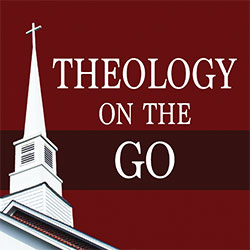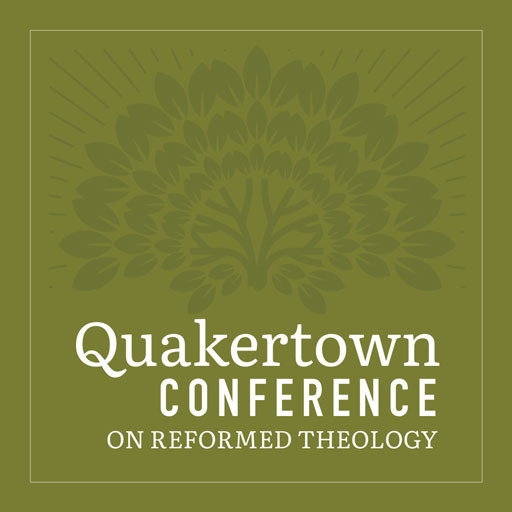
John Bulmer – Lessons Learned in Bringing Christ to Australia
John Bulmer – Lessons Learned in Bringing Christ to Australia
The name John Bulmer may not be familiar in the history of missions, especially outside of Australia, but he is a good representative of the sentiments and efforts of many Christians who witnessed, denounced, and tried to counteract the abuses, dispossession, marginalization and massacres of the Aborigines by white colonialists.
From Cabinet-Maker to Missionary
John Bulmer was born on June 30, 1833 in Monkwearmouth, Durham, England. His mother died when he was five and his father followed her three years later. Little is known of John’s early life but in 1851 he was living with his uncle and aunt, William and Jane Bulmer. By then, he had been learning a trade as a cabinet maker for about two years, under a man named John Eggers, who became like a father to him.
In 1852, John Eggers, his wife Caroline and their four children emigrated to Melbourne, Australia – a new land of opportunities because of the recent gold rush. Bulmers, then 19, went along. But John Eggers died on the way out. Bulmer then stayed in Melbourne, working for two years to repay his passage and help out John Eggers’ family.
When the Eggers returned to England in 1854, he found himself alone in a foreign land. But he interpreted these losses as a work of God’s providence: “Though the matter seemed to me a great calamity, yet on looking back I feel that it was a great blessing in disguise, as it seemed to bring about a great crisis in my life.”[1]
It was during that time, in fact, that Bulmer, shocked by the way the Aborigines were treated in the gold fields “by those who ought to know better.” Not only were they mistreated, “they were encouraged in everything that was degrading and therefore they sank even lower than they were before the advent of Europeans.”[2]
He was determined to do something about it. In 1855, an opportunity arose. Bulmer saw an advertisement from the recently-formed Melbourne Church of England Mission, and offered himself as volunteer.
Respecting Local Cultures
He was assigned to a mission plant at Yelta, on the Murray River, together with another missionary, Thomas Goodwin. Endowed with a natural ability to learn languages, he learned to speak basic Maraura within a few weeks. In fact, after about six months, the locals told him he sounded almost like one of them. Even though most Aborigines spoke English, he believed that speaking their language showed respect and led to a better communication of the gospel.
It was at Yelta that Bulmer met his first wife, Marianne Stocks, who was serving as teacher for the children of both missionary and local families. They married in 1858. Soon, the Melbourne Church of England Mission invited him to begin a mission in Gippsland, about 90 miles east of Melbourne. Considering the idea became impossible when Marianne contracted tuberculosis. She continued to teach even when her voice turned to a whisper. In 1861, however, the Bulmers returned to Melbourne, where she died.
Bulmer then decided to accept the Mission’s calling. He visited Gippsland and, following the advice of some local men, chose to plant the mission at Lake Tyers. His decision was largely motivated by the opportunities the lake provided for the locals to continue their traditional occupations of hunting and fishing. In this, he showed his departure from the habit of many missionaries to pair the conversion to Christianity with the adoption of western customs and lifestyles.
Another benefit of Lake Tyers was, for Bulmer, its distance from gold mines and white settlements, which meant distance from alcoholic beverages, foreign diseases, and the negative influence of many colonists. Finding some wood from a shipwreck, he started to build a small hut.
Back in Melbourne, Bulmer discussed his choice with the men of the missionary board, who agreed. While there, he met and married his second wife, 21-year-old Caroline Blay, who became an invaluable asset to the mission.
The True Gospel
He put into practice the lessons he had learned at Yelta. While he structured the mission in a similar way, he changed his way of communicating the gospel to the natives. Looking back, he realized that the missionaries at Yelta had placed too much emphasis on “living the gospel,” which, in their interpretation, was equal to working hard to cultivate the fields. This was a common mindset among missionaries. They thought that, by learning to work the fields, the natives would be able to improve their condition. It also reflected a mentality that equated Christianity with a European lifestyle.
“In our first going to the Murray, I fear we made a great mistake in not making the preaching of the gospel our first [aim]. … We had a very poor estimate of them being capable of understanding the gospel message and, besides this, we did not know their language. Though they spoke good English, yet I dare say the gospel message would sound better in their own speech. Still, I fear we had not so much faith in the work as we ought to have had.”[3]
He also recognized that they had put too much emphasis on the law – trying to convince the natives to recognize their sinfulness, without giving priority to the gospel.
By the time Bulmer arrived in Gippsland, the natives had suffered a long chain of abuses. In just the last twenty years, their numbers had gone from over 2,000 to 250. They called their present group, a loose union of many tribes, Kurnai. Soon, about fifty of them attended the mission regularly. By 1869, about seventy became residents there.
Initially, it was hard to impress on the natives their need for Christ. Since Bulmer paid them in food and useful items for their help in building the mission, they expected to be paid to meet other requests, including going to church or sending their children to the school. They also expected the mission to support them because, after all, the Europeans had taken over their land.
Bulmer found it difficult to understand the natives’ apparent lack of ambition and of care for the future. Eventually, he realized that many attitudes he deplored were a consequence of the fact that they had lost so much. “I am determined not to make working a chief point,” he said. “I must not be hard on them; things must take their own course; I must work a little harder myself, until I see better.”[4]
The last sentence, “until I see better,” is characteristic of Bulmer’s life. One of his most outstanding qualities, it seems, was his willingness to take time to learn and adapt. His eagerness to learn produced a volume of descriptions of Aboriginal cultures which is still considered among the most important early accounts of this kind.
Most importantly for his Christian mission, his discoveries helped him to understand how to best communicate the gospel by using culturally-appropriate illustrations. For example, understanding that the Aborigines shared his belief in a creator of the world and in the immortality of the soul helped him to start his ministry from this common ground, much like Paul did in Acts 17.
Although few Kurnai seemed to meet Bulmer’s standards of Christian life, he was glad to report that, at least, many expressed faith in Christ on their deathbeds. He eventually recognized that his expectations might have been different than God’s.
Disagreements
Bulmer didn’t always agree with the decisions of the government or the Mission Board. For years, he had to struggle to support his family of ten children while providing for the needs of the community with very little support from the Mission Board.
He also spoke against many colonial policies. For example, in 1877 he opposed the habit of removing orphan children from their communities, supposedly to give them better care. While most missionaries approved this policy, seeing it as an opportunity to raise the children in Christian home, Bulmer explained that Aboriginal cultures were well prepared to care for orphans. “When a child loses its father,” he wrote, “it has another father who takes up the care and loves the child as much as the parents. They would not like that child removed from the station. They call it their own child.”[5]
His loudest protest was probably in 1886, when the government passed the Aborigines Protection Act, which considered half-cast Aborigines as whites and mandated that they should leave the Aboriginal stations. This law ended up splitting many families, forcing children to leave their homes and husbands to leave their wives.
Bulmer’s protests met the disapproval of the Mission Board, who removed him from the position of manager of the Lake Tyers station in 1907 (although they reluctantly allowed him to stay there, on his request, “to minister to the spiritual needs of the Aborigines”[6]). Looking back on his long and troubled life, Bulmer saw how a Latin inscription he had seen on a bridge when he was young – “Nil Desperandum Auspice Deo”[7] (Nothing despairing, under God’s guidance) – had kept him going.
Bulmer became sick in 1913, at 89 years of age, and spent the last days of his life at his daughter’s home in nearby Bairnsdale. A group of Aborigines kept a vigil by his house until his death.
But this was not the end of troubles. The new station manager, Captain R. W. Howe, took the opportunity to evict Caroline, together with her daughter Ethel, for her “misplaced sympathies”[8] toward the Aborigines. He explained that, when he wanted to punish the natives, Caroline would often object, saying “that it was a shame to treat them like that.”[9] This, Howe felt, was undermining his authority. Also, since the Aborigines felt a debt of gratitude to Caroline, they would often help her out to the neglect of the assignments he had given them.
Caroline petitioned the Victorian Board for the Protection of Aborigines: “I feel to leave this home, would hasten my end,”[10] she said. She was 73, and had lived at the station for 51 years. She reminded the Board that her home had been built entirely by her husband and the natives, costing the government nothing.
The Aboriginal residents of the station strongly supported her cause, writing an articulate, fervent, and cogent petition, first to the Board and then to the Governor of Victoria: “Give to us the People we would Love to be amongst us.”[11] They also asked that Ethel be allowed to carry on the work her father had started by teaching Sunday School: “Yesterday Sunday there was neither Sunday school or Church, and if this is what is before us, then it is a poor outlook for the children & younger ones growing up.”[12]
In the end, all petitions failed and Caroline and Ethel had to leave. Caroline lived with a nearby relative (possibly a son) until her death in 1918. But the affection the locals showed the Bulmer family is a loud testimony of their mutual love and care.
In fact, the best praise of John Bulmer may be what the Aborigines wrote in their petition on behalf of his wife, where they called him “our beloved minister, friend, adviser, & father … and we now miss his familiar face among us. For over (50) fifty years he laboured among the natives, and we will probably never get another to spend a life of self-sacrifice as he did.”[13]
[1] John Bulmer, John Bulmer’s Recollections of Victorian Aboriginal Life, 1855-1908, Museum Victoria, 1999, p. xvi.
[2] John Harris, One Blood: 200 Years of Aboriginal Encounter with Christianity: A Story of Hope, Australians Together. Kindle Edition, 2013, p. 213
[3] Ibid., pp. 267-268.
[4] John Bulmer, “Missionary Intelligence; letter to Mr. Chase,” Church Gazette, Melbourne, January 6, 1863, n. 23, vol. I, p. 222, quoted in Peter Carolane, “John Bulmer, Missionary and Advocate (1862-1913),” CASE Online Library, https://www.case.edu.au/products/john-bulmer-missionary-advocate-1862-1913-peter-carolane
[5] Royal Commission on the Aborigines, Victoria, 1877, quoted in Peter Carolane, “John Bulmer, Missionary and Advocate (1862-1913).”
[6] Victoria Haskins, ‘“Give to us the People we would Love to be amongst us”: The Aboriginal Campaign against Caroline Bulmer’s Eviction from Lake Tyers Aboriginal Station, 1913-14’, Provenance: The Journal of Public Record Office Victoria, issue no. 7, 2008, p. 21, https://prov.vic.gov.au/sites/default/files/files/media/provenance2008_haskins.pdf
[7] Horace, Odes, 1, 7, 27
[8] Victoria Haskins, “Give to us the People we would Love to be amongst us,” p. 23.
[9] Ibid, p. 22
[10] Ibid, p. 19
[11] Ibid, p. 22
[12] Ibid, p. 21
[13] Ibid, p. 21

























